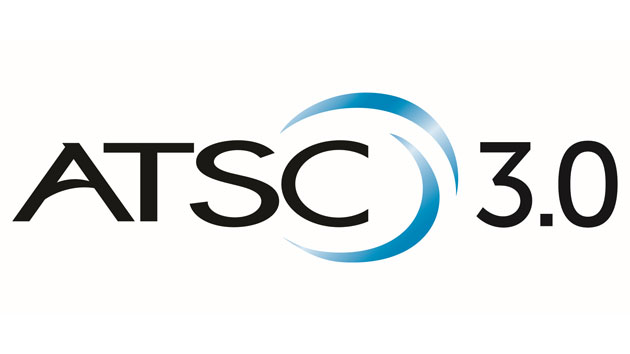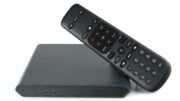Something astounding happened yesterday at the National Association of Broadcasters’ semi-annual meeting in New York City. It’s something we don’t often see much any more from any of our national institutions and it’s definitely newsworthy:
People agreed on something.
That’s right. According to Multichannel News, a “a broad coalition of station executives, led by those at FOX Television Stations, NBC and Telemundo Owned Stations Group, Univision, Tegna and Nexstar Media Group” agreed to support the presumed next-generation TV standard known as ATSC 3.0.
Great! 4K TV for everyone! Wait, uh…
Let’s not get too far ahead of ourselves. The coalition, which includes a lot of the major broadcast players, agreed to start ATSC 3.0 service “around 2020.” In other words, not today. They also “agreed” that the transition would take about five years.
Hey Stuart, why all the “air quotes?”
First of all this agreement is great because it generates a lot of buzz and news stories but it’s really meaningless. It doesn’t set standards, timelines, or any sort of real exit strategy from the current broadcast system. Why? Because even in today’s political climate, broadcasters can’t do that. Doing all those things takes an act of Congress. That could take a lot longer or it might not happen at all. While we’re waiting for Congress to do something constructive about the next generation of television broadcasting, we have the time to explain how we got here.
Remember the digital transition of the 2000s?
In 2000, you almost certainly watched TV on a heavy, chunky tube television. 32″ was considered a pretty big TV back then. By 2010, you almost certainly watched TV on a thin, flat TV of 40″ or more. (Today, you might just watch TV on your phone instead, but that’s a different article.)
That all happened because the US government passed a law saying that broadcasting was going from analog to digital, and adopted the standards set by the Advanced Television Standards Committee (ATSC) to make that happen. A huge amount of money was paid in subsidies to broadcasters to make this happen, and even more money went straight into the pockets of consumers for devices that would ensure that their old TVs would still work.
Back then we foolishly thought that the new standard, adopted in 2009, would last as long as the old standard, which was adopted in 1941. And yet, here we are not even ten years later.
Enter ATSC 3.0.
No one talks much about ATSC 2.0, I guess it didn’t work out. But the current recommendations from the Advanced Television Standards Committee, called ATSC 3.0, were approved by the FCC last year on a “voluntary” basis. This was a massive change to the way the FCC does business. Before that rule, every TV in the country had to be able to receive every broadcast. With that rule, the next-gen broadcasts were to be allowed as long as the programming was also available in a regular broadcast. This allows any broadcaster to test ATSC 3.0 in their own markets if they want. However, it doesn’t authorize them to turn off their old broadcast towers yet.
The FCC is hoping that due to this rule change, TV manufacturers will start putting ATSC 3.0 tuners into their TVs without being paid by the government to do so. That is yet to happen, but we’ll see what the 2019 TVs bring at the CES show next year.
Where do we go from here?
If broadcasters have their way, all broadcasting will transition to ATSC 3.0 by 2025. That seems like a long time from now and it’s actually not an impossible deadline if Congress acts. They would have to formally adopt ATSC 3.0 as the only broadcast service. Then there would still have to be some sort of transition to get people into ATSC 3.0-compatible devices, whether these are converter box type devices or just new TVs. A lot of money was spent a decade ago to make that happen.
Broadcasters themselves can’t decide that 2025 is the date. They don’t make the laws, Congress does. But Congress could listen to them if they say they are ready.
Overall just getting broadcasters widely interested in doing this sort of thing without massive subsidies is a big deal. Until recently, Sinclair Broadcast Group was the only really large station owner to show any interest in ATSC 3.0. Seeing a coalition of station owners all willing to commit millions of dollars to this project makes it a lot more likely.
But… curb your enthusiasm.
While the ATSC 3.0 standard does include the possibility of 4K over-the-air TV, it’s still not a lock. Oh, it will probably happen simply because 4K video production isn’t that expensive now, but it’s not the reason that broadcasters are excited. They may say otherwise but they don’t care at all about 4K. What they care about is money.
ATSC 3.0 lets broadcasters control your connected smart TV. Using similar technology to what DIRECTV, DISH, and other pay-TV companies now do, ATSC 3.0 will let broadcasters download commercials straight to your TV. These commercials will be tailored toward you a lot more than today’s broadcast commercials are. Sure, there will be “regular, mass-market” commercials in the broadcast for everyone, but your smart TV will automatically override them with cust0m-targeted commercials whenever it can. Broadcasters think this is going to make them tons and tons of money.
All I can say is, whatever. I wish them luck. I’m a strong believer in over-the-air TV but it’s hard to ignore the influence of streaming and cell phones. The living room TV isn’t the only option anymore, and I have to wonder if this is just going to cause fragmentation in the marketplace that will hurt over-the-air TV instead of help it.
Just like all of you, I look forward to 4K network programming. Eventually. Hopefully sometime in the next 7-10 years. Until then I’ll enjoy the best quality signal using an antenna. Honestly, HD coming from an antenna looks better than Netflix 4K most of the time anyway.





